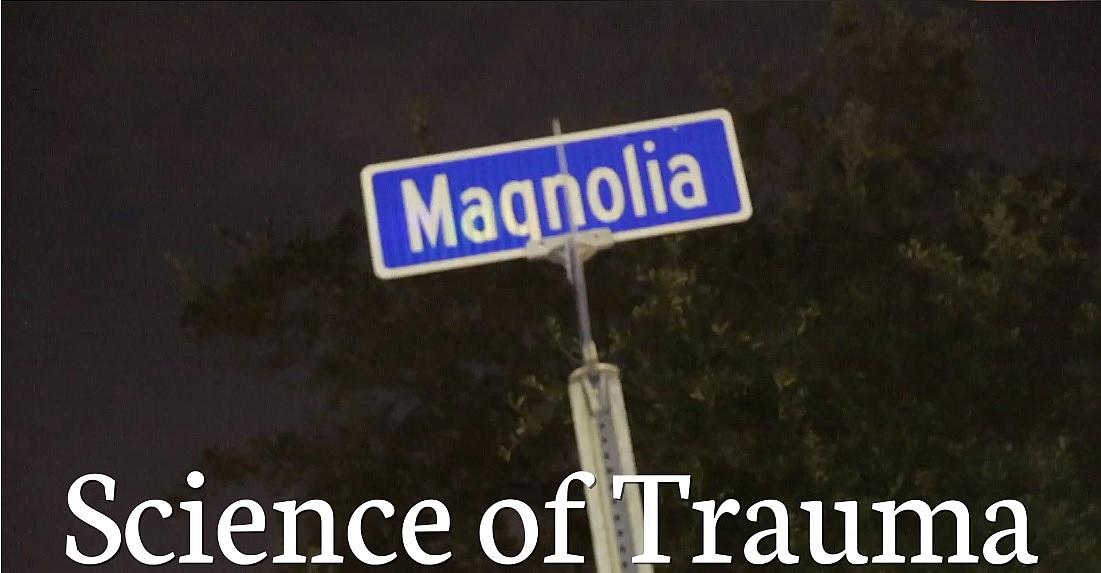How exposure to violence can be toxic to a child's brain and body
This article was produced as a project for the Dennis A. Hunt Fund for Health Journalism, a program of the USC Annenberg Center for Health Journalism.
Other stories in the series include:

Central City is one of New Orleans’ most violent communities, with the second highest number of nonfatal shootings and the sixth-highest murder total among 20 local neighborhoods, according to NOPD statistics for the first half of 2017.
It is also home to roughly 2,900 children and teenagers, who often witness these and other crimes, such as domestic violence, assault and substance abuse. For many of the boys and girls of Central City, this is a weekly, if not daily occurrence.
Scientists, including researchers in New Orleans, have begun to understand the impact of this frequent, long-term exposure to violence. When children grow up surrounded by crime, their brains can become conditioned to perceive the world as a dangerous place, said Dr. Stacy Drury, associate director of Tulane University’s Brain Institute. As a result, the smallest provocation can trigger their “fight, flight or freeze” instinct.
In such moments, marked by high stress and fear, the body releases hormones, including cortisol and adrenaline. They elevate the heart rate and blood pressure, providing a burst of energy needed to ensure survival in times of danger. In most people, the cortisol and adrenaline levels drop back to normal once the perceived threat is gone.
This return to normal hormone levels doesn’t always happen for children regularly exposed to violence, as they live in a constant state of alarm, said Paulette Carter, president and CEO of the Children’s Bureau of New Orleans, a nonprofit mental health agency serving more than 3,000 children and their families each year. The effects can be toxic to the brain, especially those regions responsible for memory, emotions, stress responses and complex thinking.
That’s why traumatized children have difficulties with anger management, impulse control and the processing and retention of information, Drury said. Since general practice physicians typically don’t test for trauma, these symptoms can lead to a misdiagnosis of attention deficit hyperactivity disorder and the prescription of unnecessary medication, causing further complications, she said.
The full impact of trauma is not yet known, though research is beginning to show that, in addition to affecting children’s mental and emotional health, it can have a biological impact as well.
Exposure to violence can cause premature cellular aging through the shortening and fraying of the tips at the end of chromosomes, according to a 2014 study of 80 New Orleans-area children by the American Association of Pediatrics. The erosion of these protective tips, known as telomeres, can lead to cardiovascular disease, obesity, diabetes and mental illness, according to the study.
Trauma has also been shown to impair the immune system. When people switch into fight or flight mode, the brain shuts down parts of the body that are not vital in efforts to escape an imminent threat, such as the immune system, according to the American Psychology Association. As a result, children who exist in a persistent state of alarm and stress can suffer permanent damage to their ability to fight off diseases.
Other studies indicate that women exposed to trauma during pregnancy can pass on the mental, emotional and physical effects to their unborn child, and, in some cases, these effects can be passed on to future generations through DNA.
To raise awareness of this problem and its prevalence among New Orleans’ young people, the Institute of Women and Ethnic Studies started a campaign entitled, “Sad not Bad.” Children who are disruptive or disinterested in class, or appear prone to violence or anti-social tendencies, may be doing so not because they are “rotten” kids, but because they have been exposed to traumatic events at an early age and have not received the therapeutic care they need, the institute’s president and CEO Dr. Denese Shervington said.
“To me, violence is just the nasty underbelly of untreated trauma,” Shervington said. “If we treated trauma in children we would create communities that have psychological safety.”
[This story was originally published by NOLA.com | The Times-Picayune.]


